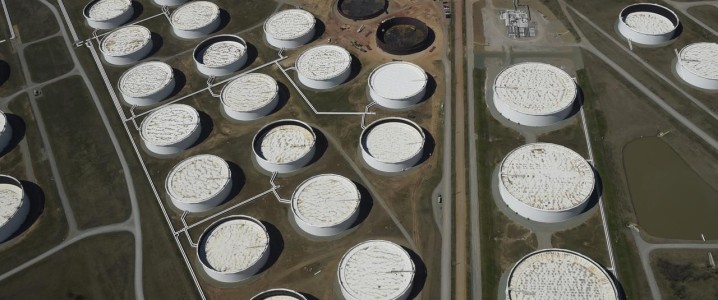Crude oil inventories in the United States rose by 3.8 million barrels for the week ending June 27, according to the latest report from the U.S. Energy Information Administration (EIA) released on Wednesday. This increase brings the total commercial stockpiles to 419 million barrels, which is approximately 9% below the five-year average for this period. The rise in inventories comes as a surprise to many, as crude prices had been trading higher in anticipation of the report.
The American Petroleum Institute (API) had earlier estimated a smaller build of 680,000 barrels, while analysts had predicted a draw of 2.26 million barrels. At 9:19 a.m. in New York, Brent crude was trading at $67.73 per barrel, marking a 0.92% increase on the day, but only a slight $0.20 rise week over week. Meanwhile, West Texas Intermediate (WTI) was priced at $66.11 per barrel, reflecting a 1.01% gain.
Impact on Gasoline and Distillate Inventories
Alongside the increase in crude oil inventories, the EIA reported a significant build in total motor gasoline inventories, which rose by 4.2 million barrels. This comes as daily production slipped to 9.6 million barrels. On the other hand, middle distillate inventories saw a decline of 1.7 million barrels, with production increasing by 244,000 barrels daily. Distillate inventories remain 21% below the five-year average, indicating a tighter supply.
Total products supplied over the last four weeks averaged 20.3 million barrels per day, a decrease of 1.1% compared to the same period last year. Gasoline demand averaged 9.2 million barrels per day, while distillate product supplied was 3.7 million barrels, showing a 0.6% year-over-year increase.
Market Reactions and Expert Opinions
The announcement of increased inventories has prompted a mixed reaction from market participants. While the initial expectation was for a drawdown, the unexpected build has led to a reassessment of market dynamics. According to energy analyst Sarah Emerson, “The larger-than-expected build in crude inventories suggests that demand recovery may not be as robust as previously thought, or that supply is outpacing current consumption rates.”
Meanwhile, some experts point to seasonal factors affecting inventory levels. “Summer driving season typically boosts gasoline demand, but this year, the anticipated surge in travel has been somewhat muted,” noted John Kilduff, a partner at Again Capital.
Historical Context and Future Implications
This development comes at a time when global oil markets are closely monitoring supply and demand balances. Historically, inventory builds during the summer months can signal weaker-than-expected demand or increased production. The current situation echoes similar patterns seen in previous years, where unexpected inventory levels have led to volatility in oil prices.
Looking ahead, the oil market faces several uncertainties, including potential changes in production quotas by OPEC+ and the ongoing impact of geopolitical tensions. The recent data may prompt a reevaluation of production strategies among major oil-producing nations.
In conclusion, the rise in U.S. crude and gasoline inventories presents a complex picture for the oil market. While prices have shown resilience, the underlying supply-demand dynamics continue to evolve. Market participants will be closely watching upcoming reports and geopolitical developments for further insights into the direction of oil prices.
About The Author
 Trailways Ranks Among Top 3 U.S. Bus Services in USA Today Awards
Trailways Ranks Among Top 3 U.S. Bus Services in USA Today Awards Commercial Banking Transforms with Data-Driven Innovations
Commercial Banking Transforms with Data-Driven Innovations Mattamy Homes Celebrated as Top Workplace in Central Florida for Fifth Year
Mattamy Homes Celebrated as Top Workplace in Central Florida for Fifth Year Tesla Sales Decline Amid Boycott as Competitors Gain Ground
Tesla Sales Decline Amid Boycott as Competitors Gain Ground Grab Expands Electric Taxi Fleet in Manila and Singapore, Pioneering Sustainable Urban Transport
Grab Expands Electric Taxi Fleet in Manila and Singapore, Pioneering Sustainable Urban Transport